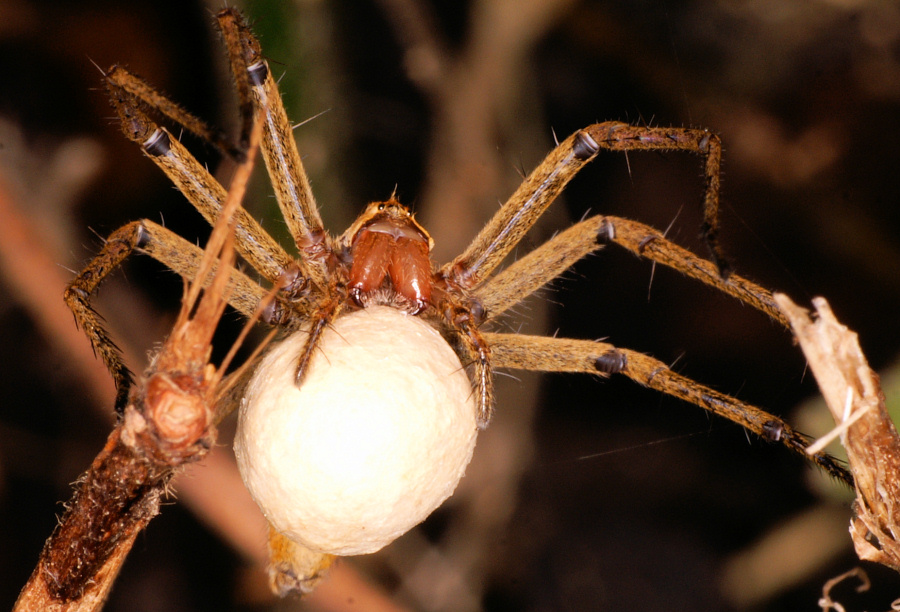
Pisaura mirabilis carying her egg cocoon in her fangs

Pisaura mirabilis carying her egg cocoon in her fangs
| There are three species in these two genera - Pisaura and Dolomedes - living in Europe. These spiders live nearby water. In Britain they are also called swamp spiders or fishing spider. Females can reach a length of 25 mm while the males are around 12 mm. Dolomedes spiders have the capability to walk on the water where they put one leg in the water to attract the fish with their leg. When the fish is too close with curiosity, the spider snaps it. Like the water spider these spiders can also stay under water for over an hour. They do not hunt under water but use it as a safe place to hide. Nursery web spider carry their egg sacs with their chelicerae unlike the Lycosidae. |
|
| Just before the spiderlings leave their eggs the mother weaves a tent of silk around the egg sac. The egg sac is then partially opened by the mother who then stands guard near the nursery tent. The youngsters stay in their tent until they change their skin for the first time. 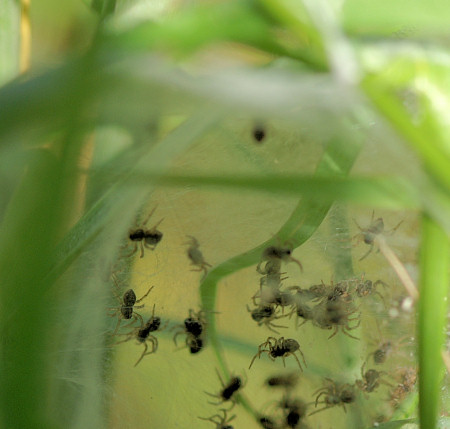 |
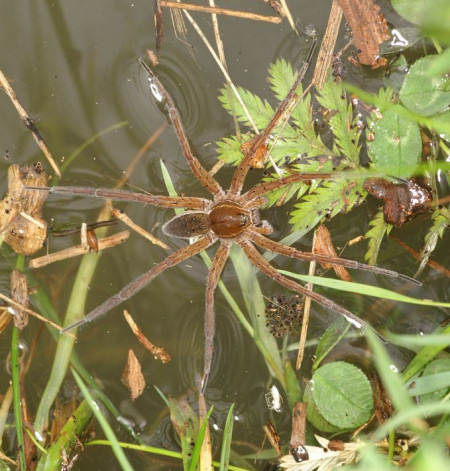 |
| Pisaura mirabilis youngster in their tent | Dolomedes plantarius fishing on the water |
Genus Pisaura
This single species can be found in all parts of Europe and is also called 'nursery web spider'.
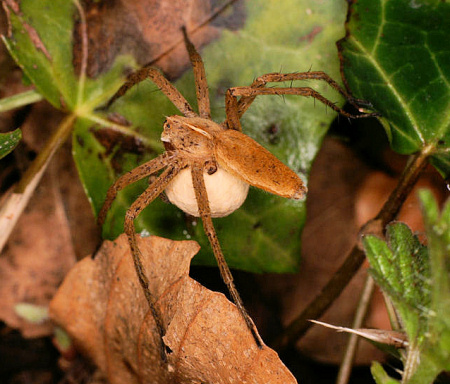 |
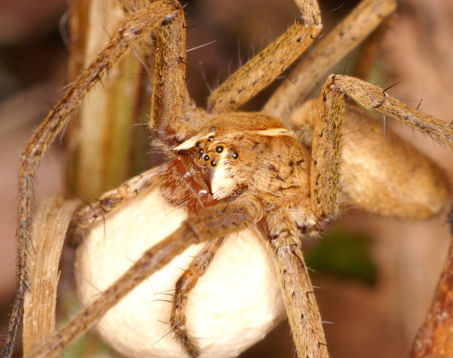 |
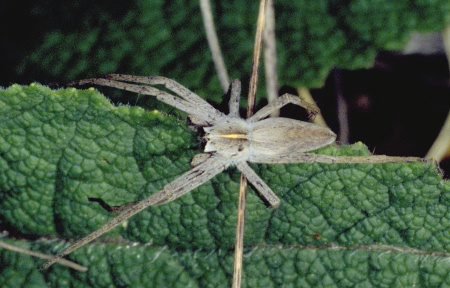 |
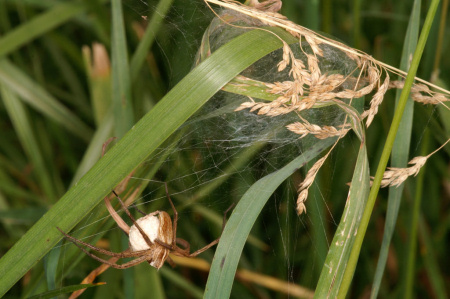 |
| Pisaura mirabilis | guarding her nest with cocoon |
The spiders make their nests between the grass. The size of the nest has a
diameter of approximately 10 cm.
In June or July one can see the spider walking with her egg-sac and the large
bundle of egg is held firmly solely by the grip of the chelicerae and the back
pressure of her palps.
Just before the young emerge from the egg sac the mother weaves a dome-shaped
tent in which their mother guards the young.
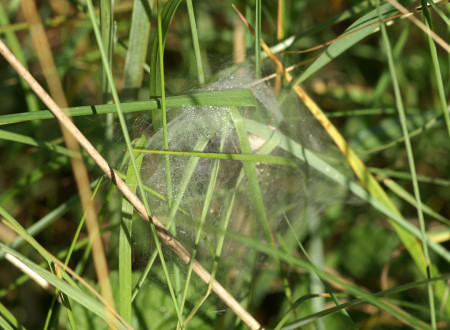 |
|
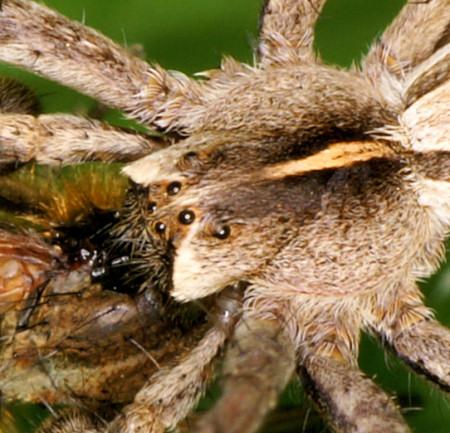 |
One can see a lot of varieties of Pisaura mirabilis. Some examples are shown below.
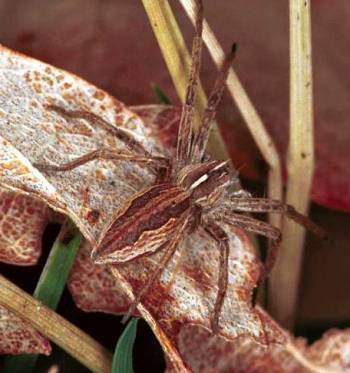 |
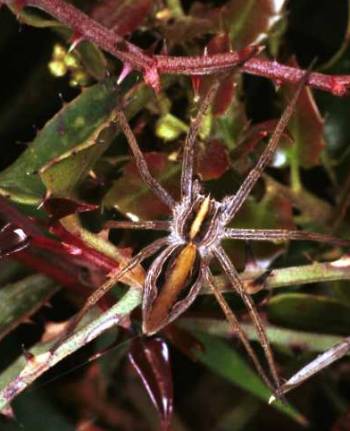 |
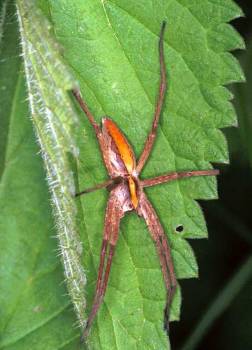 |
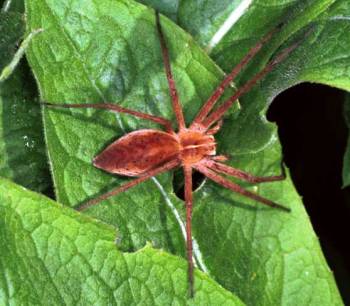 |
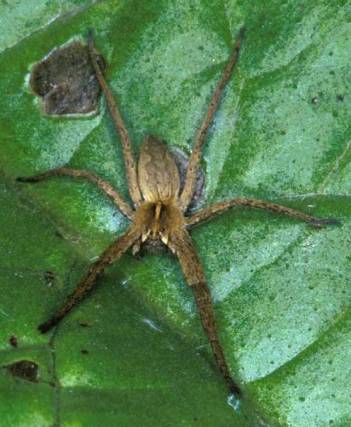 |
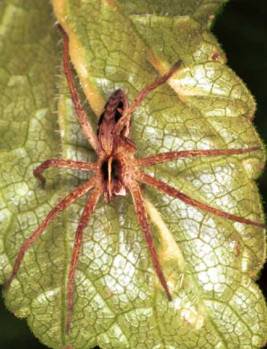 |
Genus Dolomedes
These spiders can be found near water. Two species can be found. They are very large spiders and may measure up to 25 mm without legs.
The spider catches insect, fish and salamanders. Their breeding care is exceptional.
If a mother is separated from their eggs she will return to the spot even if she is carried away for 200 meters.
The spider sits on vegetation at he edge of pools. If the spider is disturbed
it will flee into the water and will hide under the surface between vegetation
for almost an hour.
If the spiderlings emerge from their nursery tents they
often exploit higher and dryer habitats and may be found in bushes and trees.
Dolomedes plantarius is very similar to Dolomedes fimbriatus but
without less well-define stripes.
|
|
|
|
Dolomedes fimbriatus |
Dolomedes fimbriatus juvenile |
|
|
|
|
Dolomedes fimbriatus |
Dolomedes plantarius with egg cocoon |
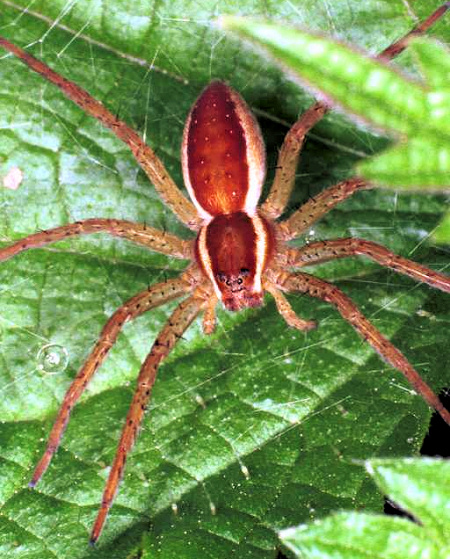 |
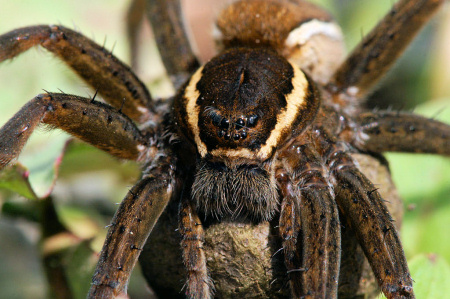 |
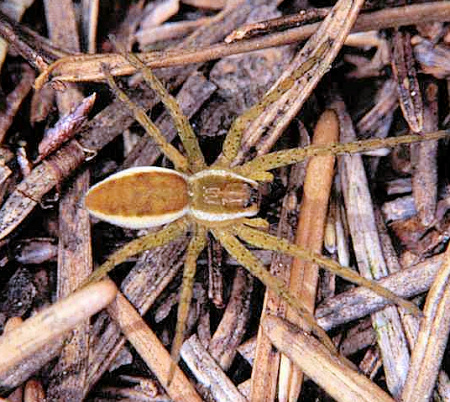 |
|
| Dolomedes fimbriatus juvenile | Dolomedes fimbriatus juvenile |
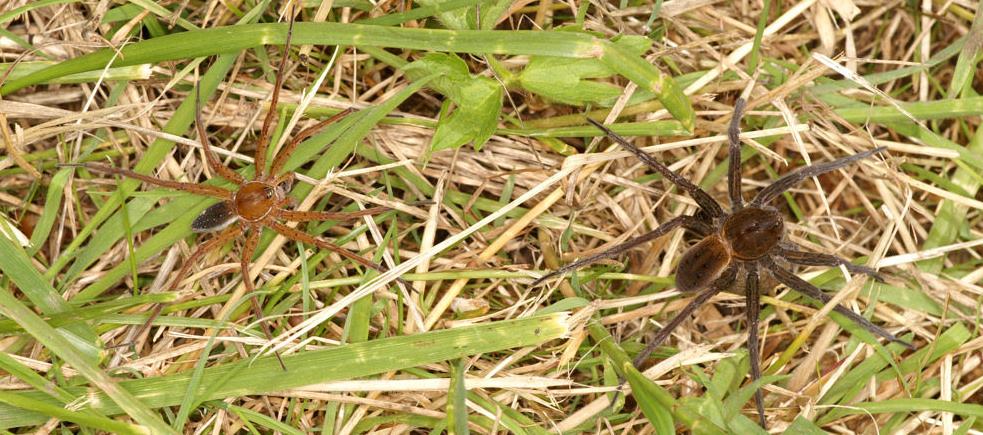 |
|
| Dolomedes plantarius male and female with cocoon | |
|
|
|
| Dolomedes plantarius (notice its size) | Dolomedes plantarius male |
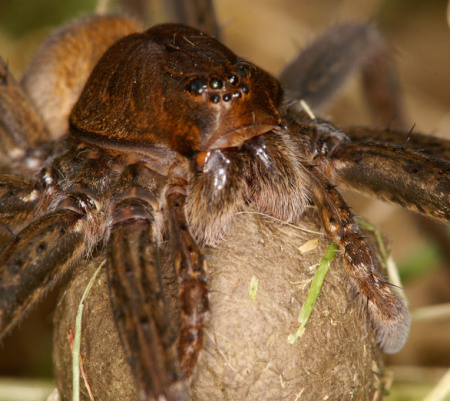 |
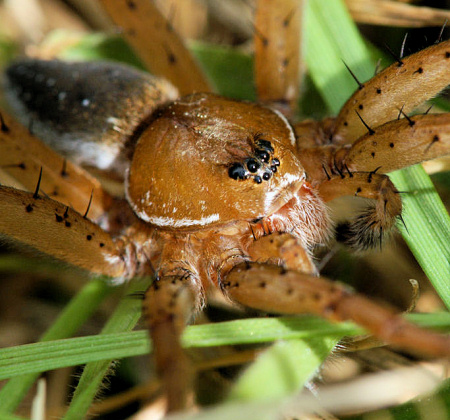 |
|
Dolomedes plantarius guarding her egg-sac |
Dolomedes plantarius male |
Ed Nieuwenhuys, 10 July 2010
July 29, 2008
September 12, 2000